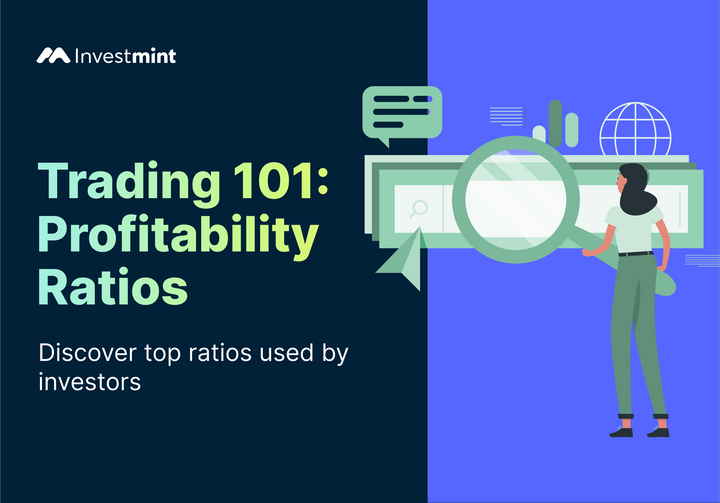A Detailed Guide To Scalping: Definition, How To Use & Examples
Scalping involves making profit from short-term price movements. Learn the advantages and risks associated with this trading strategy.

This article will focus on scalping—a popular and dynamic approach that promises quick gains. By the end of this article, you'll have a firm grasp of what scalping entails, how to use it effectively, and the risks involved.
What Is Scalping?
Now, let's delve into the essence of scalping and understand its unique characteristics. Scalping is a trading strategy that focuses on capitalising on small price fluctuations in the market. Unlike other trading strategies that may aim for larger gains over longer timeframes, you, as a scalper, will seek to profit from short-term price movements by entering and exiting positions rapidly.
One key difference between scalping and other trading strategies is the timeframe and frequency of trades. While long-term investors may hold onto positions for weeks, months, or even years, scalpers aim to execute numerous trades within a single trading session. This fast-paced approach allows scalpers to take advantage of immediate market inefficiencies and capitalise on small price differentials.
When it comes to markets, scalping is particularly well-suited for highly liquid markets such as major currency pairs in the forex market or heavily traded stocks in well-established exchanges. The high liquidity ensures ample trading volume and narrow spreads, allowing scalpers to enter and exit positions quickly without significantly impacting the price.
In terms of holding time, scalping trades are typically very short-lived. Scalpers aim to hold their positions for only a few seconds to a few minutes at most. The goal is to capture quick profits as soon as possible without staying exposed to the market for an extended period.
How To Use The Scalping Strategy
You need to consider several key factors to employ the scalping strategy effectively. First and foremost, it's crucial to identify highly liquid markets, as they provide the necessary trading volume and tight bid-ask spreads required for quick transactions.
Scalpers often rely on technical analysis indicators and chart patterns to identify short-term trends and potential entry and exit points. They closely monitor price movements, volume, and other relevant market factors to make informed decisions. Risk management is also crucial, as scalping involves frequent trading, and losses can accumulate if not properly managed. We have elaborated on the risks involved further.
Advantages Of Scalping
As a trading strategy, Scalping offers several distinct advantages that attract traders seeking fast-paced opportunities.
- Exploiting Small Price Movements: One of the primary benefits of scalping is the ability to profit from small price fluctuations in the market. While larger price movements may take longer to develop, you aim to capture small gains that occur frequently throughout a trading session. You can accumulate profits over time by focusing on these smaller price differentials.
Also, by reinvesting profits from successful scalping trades, you can incrementally increase your trading capital and potentially amplify your gains. This compounding effect, coupled with the high-frequency nature of scalping, can lead to a compounded and exponential growth in profitability. - Quick Turnover and High Trading Frequency: Scalping allows for a rapid turnover of positions, which means you can execute many trades within a short timeframe. This high-frequency trading approach provides more opportunities to capture profits, as you can take advantage of multiple short-term market inefficiencies. Swiftly entering and exiting positions can be especially advantageous in highly liquid markets with tight bid-ask spreads.
- Mitigating Overnight Risks: Unlike swing or position trading strategies, scalping aims to close all positions by the end of the trading day, meaning you don't carry the risk of overnight price movements or market gaps that can occur during extended periods of inactivity. By avoiding overnight exposure, you can focus on capitalising on intraday price dynamics without the uncertainty of overnight news or events.
Also, since scalping aims to minimise the duration of each trade, you are exposed to the market for relatively short periods. This reduces the risk associated with prolonged exposure to market volatility, sudden news events, or other factors that can adversely impact prices.
Risks Of Using The Scalping Strategy:
While scalping can be an enticing trading strategy with its potential for quick profits, it's essential to be aware of the risks involved. Some of the risks involved are,
- Increased transaction costs: Since scalping involves frequent trades, you may incur higher fees and commissions. These costs can eat into your profits, so it's crucial to choose a brokerage with competitive rates and carefully consider the impact of fees on your overall profitability.
- Short-term capital gains tax: Since we live in India, we are subjected to the short-term capital gains tax on your scalping profits. In India, we are charged an interest rate of 15% on net gains when invested for the short term (< 1 year). However, if you have invested for the Long term (> 1 year), you are subjected to a lower 10% interest rate on net gain. So, it's necessary to consider these for conducting a successful and profitable scalping trade.
- Overtrading and emotional attachment: Scalping can be fast-paced and exciting, tempting you to trade excessively or make impulsive decisions. This can lead to losses. To avoid this, it's crucial to stick to a well-defined trading plan with predetermined entry and exit criteria, proper risk management, and profit targets. Maintaining discipline and not getting emotionally attached to individual trades are keys to long-term success.
Finally, it's worth mentioning that scalping is generally considered more suitable for experienced traders. The fast-paced nature of scalping requires quick decision-making, the ability to interpret short-term price movements, and effective risk management. If you're new to trading, starting with longer-term strategies to build experience and familiarity with the markets may be beneficial before diving into scalping.
Example For Scalping
Let's consider a hypothetical example of one of the most well-known companies and how a scalper might trade with those shares.
Consider if Reliance (RIL) exhibited short-term price fluctuations/quick movements that presented scalping opportunities.
Suppose that RIL's stock price opened at INR 2,000 on a particular day. You, utilising technical analysis tools and indicators, identified a short-term upward trend in the stock's price and thus entered a long position, aiming to capture the potential gains.
Over the next few minutes, the price of RIL's stock increased to INR 2,020 due to positive market sentiment or favourable news. Recognising the quick profit potential, the scalpers promptly exited their positions, taking advantage of the small price movement.
In this example, scalpers could have profited from the quick price increase of RIL's stock by capturing a gain of INR 20 per share. While the gain may appear small per share, you aim to accumulate profits by repeating such trades throughout a trading session. Also, the profits will be considerably higher if the volume of shares traded is also high.
It's important to note that the suitability of stock for scalping can vary over time based on market conditions, volatility, and other factors. Therefore, it's essential for you to continuously analyse and monitor market dynamics to identify potential scalping opportunities in real time.
Conclusion
Scalping offers an active and fast-paced approach to capitalise on short-term market fluctuations.
Transaction costs, emotional discipline, and market volatility all play a role in determining the success of this strategy. If you are just starting your trading journey, consider experimenting with different strategies to find the best approach to your goals and risk tolerance.



